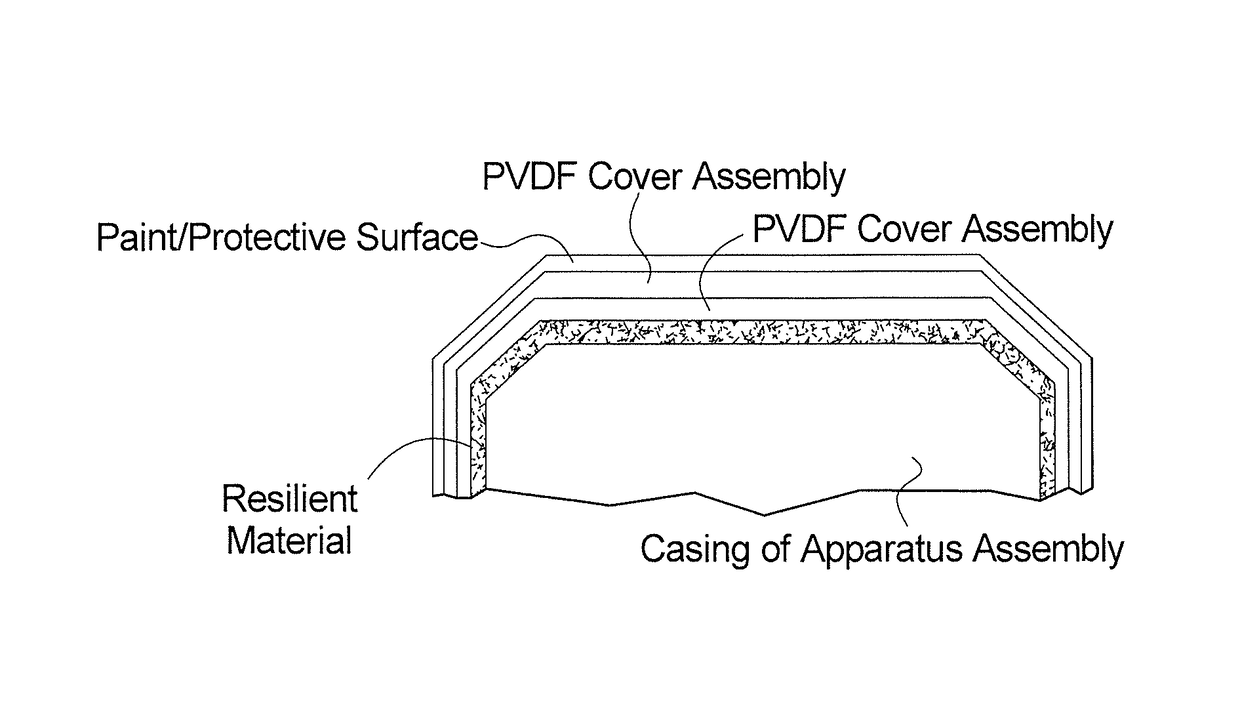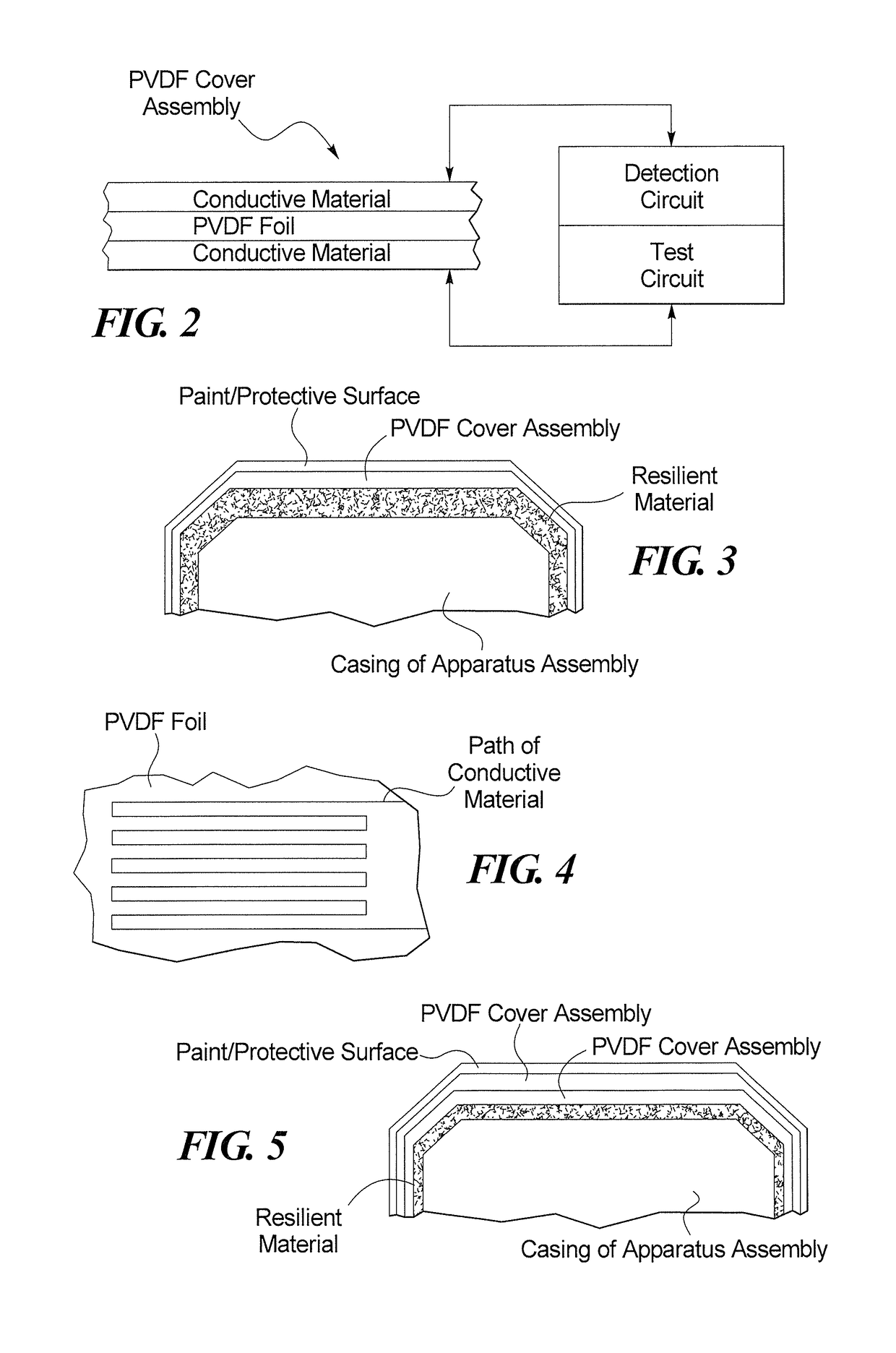Surface-mounted collision sensor, and method for collision detection
a collision sensor and surface-mounted technology, applied in the direction of instruments, fluid pressure measurement, radiation safety means, etc., can solve the problems of affecting the safety of the environment, and the inability to install protective devices,
- Summary
- Abstract
- Description
- Claims
- Application Information
AI Technical Summary
Benefits of technology
Problems solved by technology
Method used
Image
Examples
Embodiment Construction
[0035]FIG. 1 schematically illustrates an environment in which the collision sensor in accordance with the present invention is suitable for use. In the example shown in FIG. 1, this environment is a medical examination or operating room in which a robotically-operated x-ray imaging system, shown at the left in FIG. 1, is moved relative to an attendant or a physician (shown standing in the center of FIG. 1) so as to obtain medical images of a patient lying on a patient table. The examination may include the use of a lightweight robot LWR, for guidance of a medical instrument. Display screens are shown at the right in FIG. 1, and the patient table, as is known, has a side control for the x-ray imaging system and for the catheter robot. All components are operated by a system control, which has an integrated collision detector. The collision detector is explained in further detail below, and provides electrical signals indicating the occurrence of a collision between any of the compon...
PUM
| Property | Measurement | Unit |
|---|---|---|
| thickness | aaaaa | aaaaa |
| resilient | aaaaa | aaaaa |
| conductive | aaaaa | aaaaa |
Abstract
Description
Claims
Application Information
 Login to View More
Login to View More - R&D
- Intellectual Property
- Life Sciences
- Materials
- Tech Scout
- Unparalleled Data Quality
- Higher Quality Content
- 60% Fewer Hallucinations
Browse by: Latest US Patents, China's latest patents, Technical Efficacy Thesaurus, Application Domain, Technology Topic, Popular Technical Reports.
© 2025 PatSnap. All rights reserved.Legal|Privacy policy|Modern Slavery Act Transparency Statement|Sitemap|About US| Contact US: help@patsnap.com



